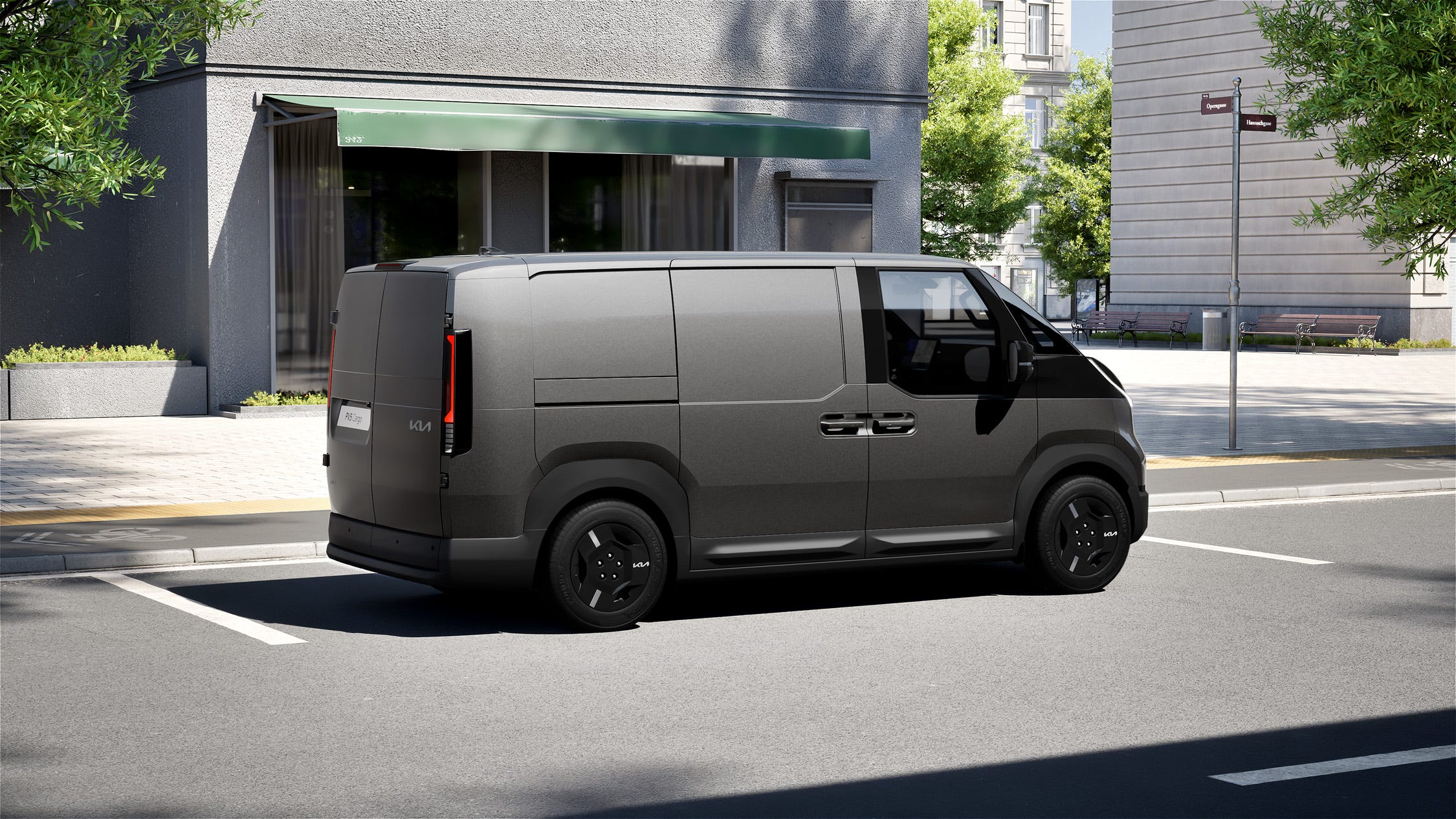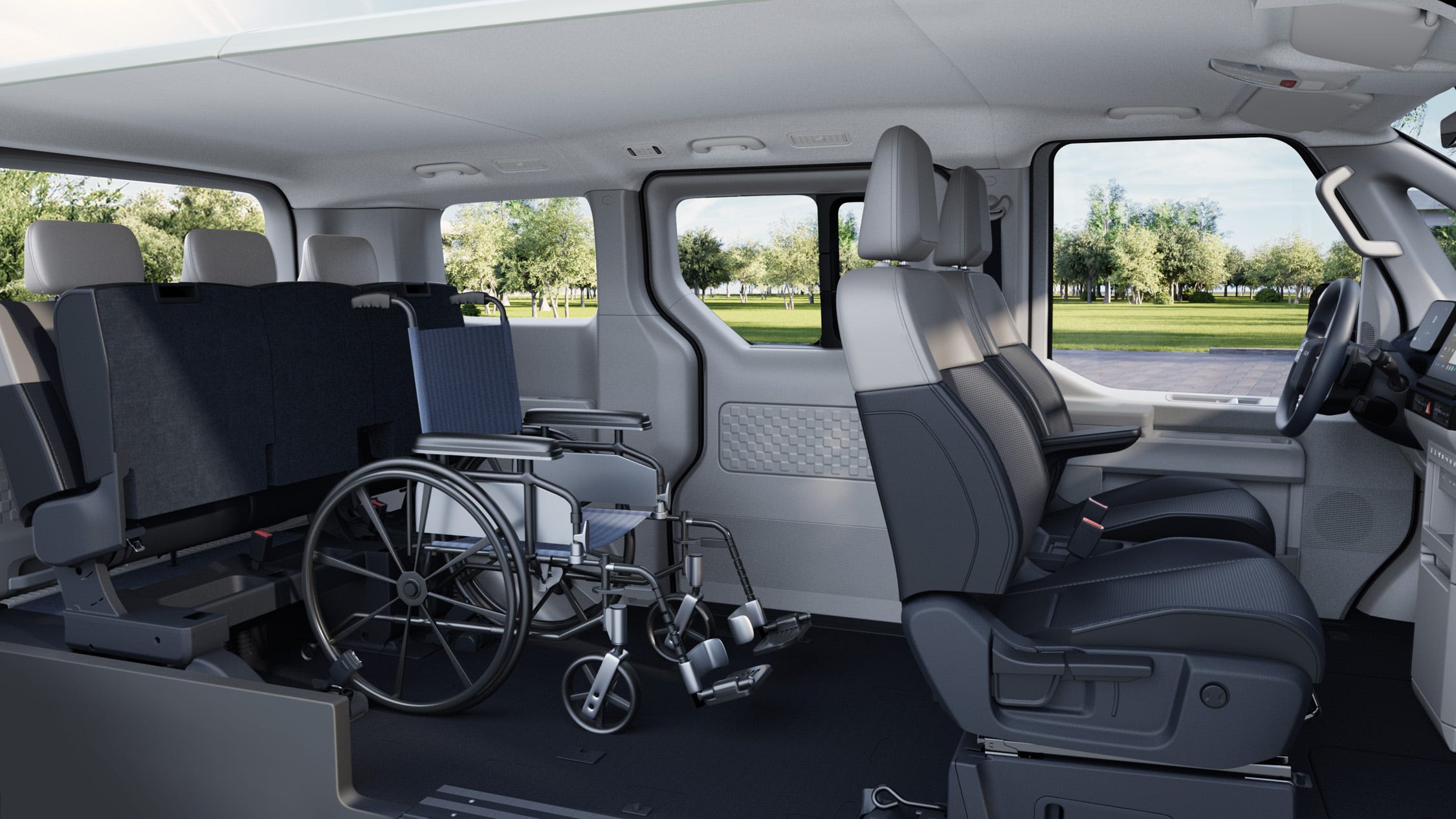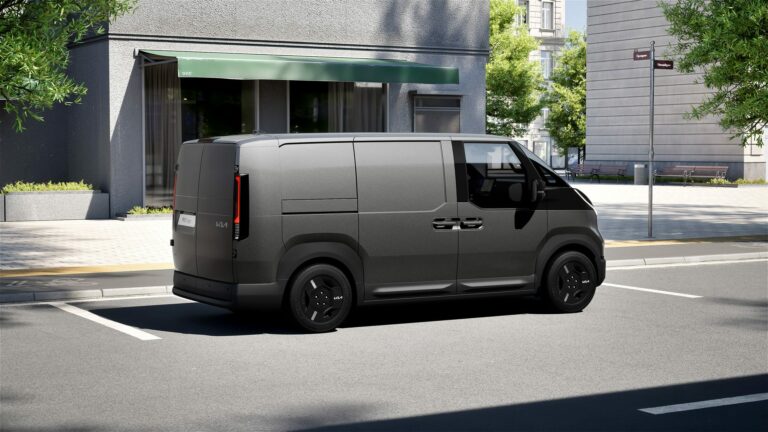Kia has disclosed further specifications for its new electric PV5 van, destined for Europe and South Korea, following the unveiling of its exterior design last week.
A Modular Platform for Diverse Needs
Built on a modular platform, the PV5 is designed to cater to a wide range of applications, including passenger transport, cargo delivery, and even a wheelchair-accessible model. The PV5 is the first production model in Kia’s new PBV—standing for Platform Beyond Vehicle—business and will ride on a new platform dubbed E-GMP.S, a version of Hyundai-Kia’s skateboard-style battery architecture. Kia contrasts its “Flexible Body System” to building a puzzle and claims that the PV5 will be well-suited to a vast range of use cases.

The PV5 features a front-mounted 161-horsepower electric motor and is anticipated to have a range exceeding 200 miles. Kia initially revealed its intention to enter the electric commercial vehicle market over a year ago at CES 2024, showcasing three van concepts, from the compact PV1 to the larger PV7. Full details on the mid-size PV5 were then unveiled at Kia’s EV Day event in Spain, with the production-ready PV5 set to launch with multiple body styles, a range approaching 250 miles, and a highly adaptable interior.
Configurations for Passenger and Cargo Transport
Kia will provide the PV5 in three distinct body styles: passenger, cargo, and chassis cab. The passenger version boasts a spacious interior with three rows of seats, configurable for various arrangements. Kia foresees the passenger-spec PV5 as ideal for ride-hailing services – the company worked closely with Uber during the van’s development – and also sees the van being well suited for personal use.
The cargo model will be available in standard, long, and high-roof configurations. The high-roof variant will include a walk-through setup for easy access to the cargo hold. The PV5 is 184.8 inches long, making it slightly longer than compact vans like the Ford Transit Connect. With a maximum cargo capacity of over 180 cubic feet, the PV5 is roomier than most compact vans, and Kia says the cargo version can hold two Euro-sized pallets. The PV5 also incorporates vehicle-to-load (V2L) functionality, enabling owners to power tools directly from the cargo area.

Finally, the PV5 chassis cab is designed as an unfinished vehicle, adaptable for numerous purposes. It combines the front of the PV5 cargo with a flat section, including side-collision protection for the battery and mounting brackets for installations like a standard or freezer box setup. Additional versions are planned, including a PV5 crew model – with a mix of seating and cargo space – and the PV5 WAV, a wheelchair-accessible model. A camper variant is also under consideration. The PV5 WAV will feature a side opening for wheelchair access from the curb via a ramp, capable of supporting up to 661 pounds. It will include a universal wheelchair belt-fastening system and third-row tip-up seats to allow other passengers to ride.
Powertrain, Charging, and Interior
Three battery options will be available for the PV5. Most configurations will come with either a 51.5-kWh or a 71.2-kWh battery, utilizing nickel-manganese-cobalt chemistry. The PV5 cargo variant will also offer a 43.3-kWh unit with lithium-iron-phosphate chemistry. All batteries supply power to a single front-mounted electric motor generating 161 horsepower and 184 pound-feet of torque.

Kia estimates a maximum range of around 248 miles for the PV5 equipped with the 71.2-kWh battery in a passenger configuration. This figure is based on the European WLTP test cycle, and would be roughly equivalent to 211 miles using the EPA’s methodology. Kia claims the PV5 can recharge from 10 to 80 percent in as little as 30 minutes, though it hasn’t specified which battery this applies to.
The interior appears modern and features premium materials in various colors, from Deep Navy to Terracotta Brown and Iceberg Green. Kia has focused on durable, easy-to-clean, sustainable, and eco-friendly materials. The “driver zone” is consistent across all PV5 variants, with a 7.0-inch digital gauge cluster and a 12.9-inch infotainment screen powered by an Android Automotive-based operating system. “Kia AddGear,” a selection of modular accessories for the cabin, will also be launched.
The PV5 will be manufactured at a new factory called the EVO Plant in South Korea. Sales are set to commence in South Korea and Europe in the second half of 2025, with expansion to other markets planned for 2026. Unfortunately, there are no current plans to bring the PV5 to the United States, possibly due to the “chicken tax,” a 25 percent tariff on imported light trucks.



